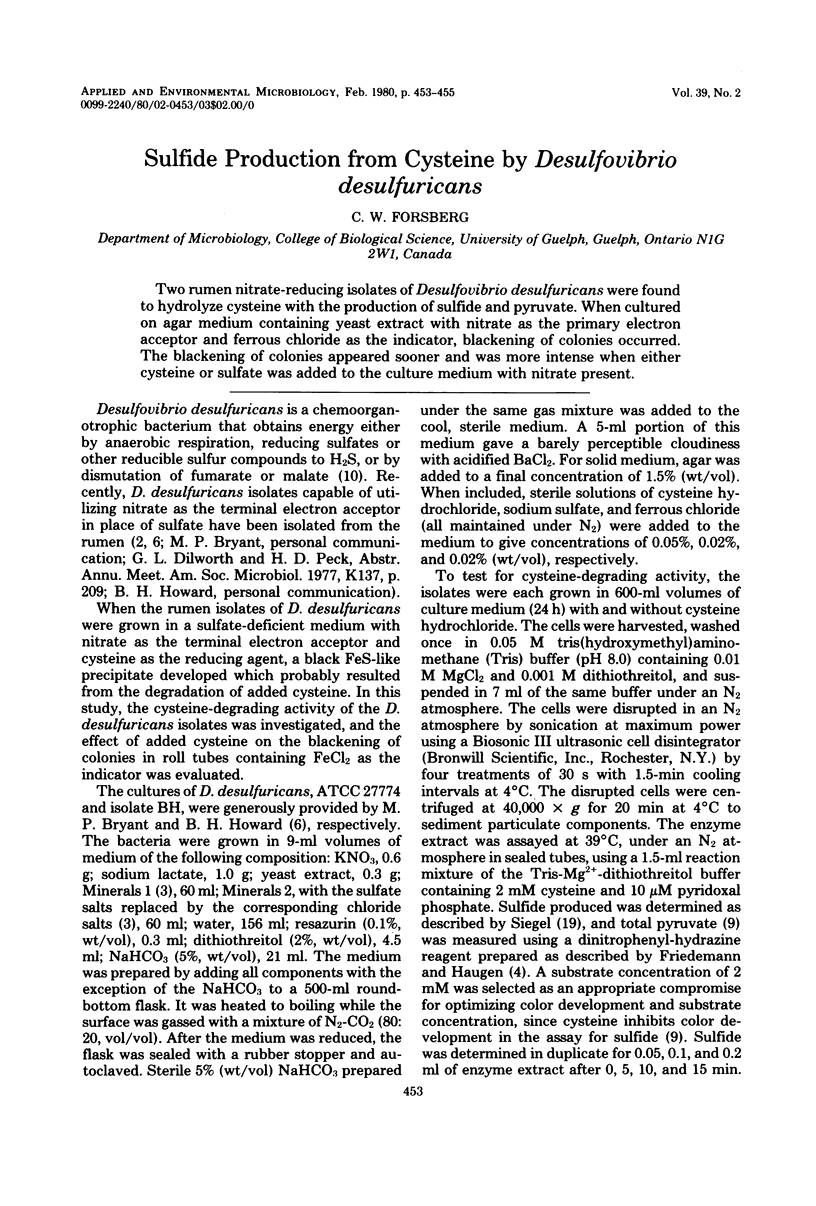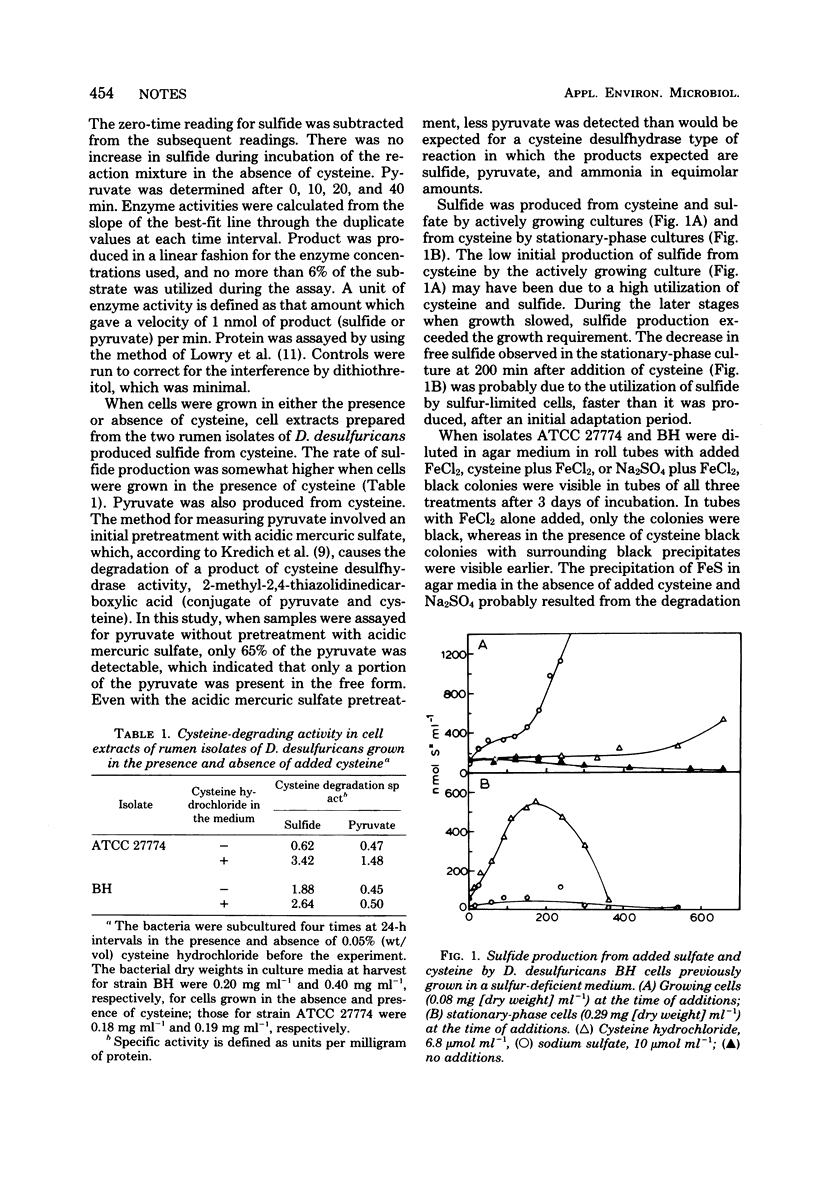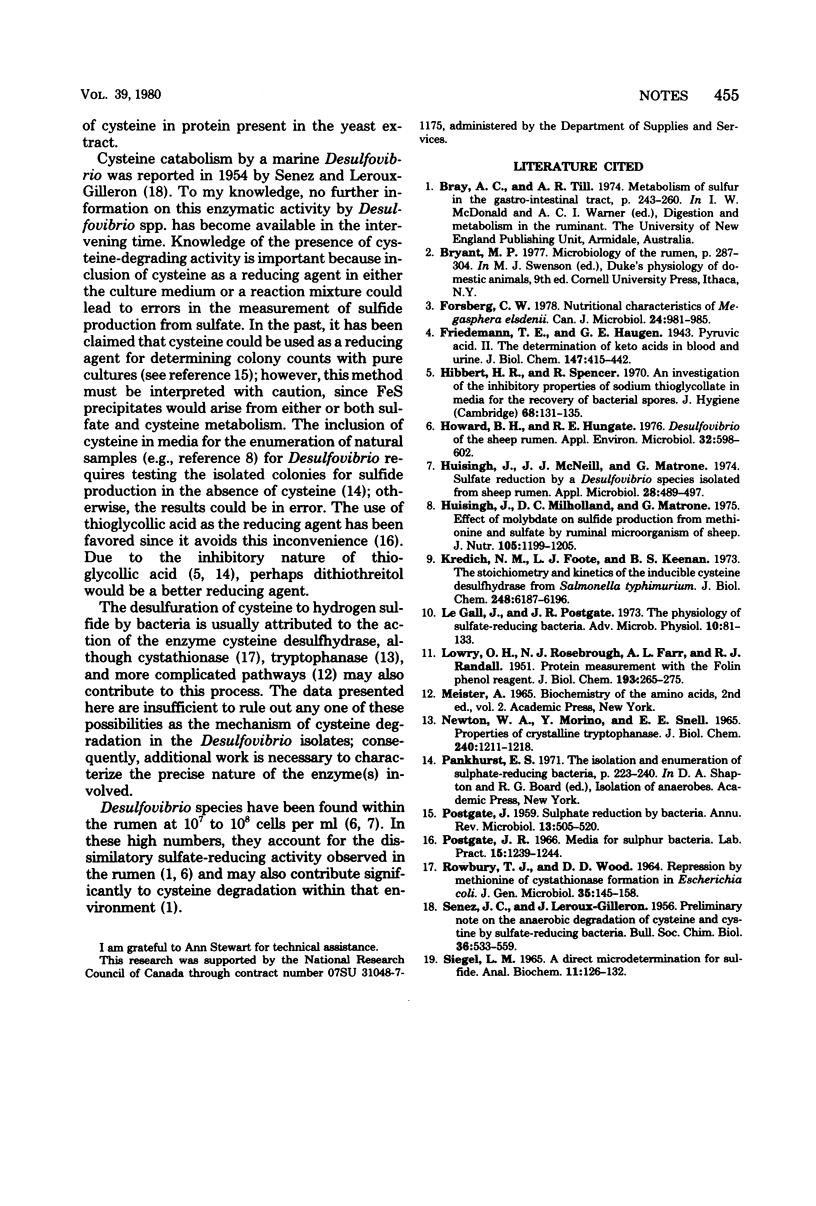Abstract
Two rumen nitrate-reducing isolates of Desulfovibrio desulfuricans were found to hydrolyze cysteine with the production of sulfide and pyruvate. When cultured on agar medium containing yeast extract with nitrate as the primary electron acceptor and ferrous chloride as the indicator, blackening of colonies occurred. The blackening of colonies appeared sooner and was more intense when either cysteine or sulfate was added to the culture medium with nitrate present.
Full text
PDF


Selected References
These references are in PubMed. This may not be the complete list of references from this article.
- Forsberg C. W. Nutritional characteristics of Megasphaera elsdenii. Can J Microbiol. 1978 Aug;24(8):981–985. doi: 10.1139/m78-161. [DOI] [PubMed] [Google Scholar]
- Hibbert H. R., Spencer R. An investigation of the inhibitory properties of sodium thioglycollate in media for the recovery of clostridial spores. J Hyg (Lond) 1970 Mar;68(1):131–135. doi: 10.1017/s0022172400028588. [DOI] [PMC free article] [PubMed] [Google Scholar]
- Howard B. H., Hungate R. E. Desulfovibrio of the sheep rumen. Appl Environ Microbiol. 1976 Oct;32(4):598–602. doi: 10.1128/aem.32.4.598-602.1976. [DOI] [PMC free article] [PubMed] [Google Scholar]
- Huisingh J., McNeill J. J., Matrone G. Sulfate reduction by a Desulfovibrio species isolated from sheep rumen. Appl Microbiol. 1974 Sep;28(3):489–497. doi: 10.1128/am.28.3.489-497.1974. [DOI] [PMC free article] [PubMed] [Google Scholar]
- Huisingh J., Milholland D. C., Matrone G. Effect of molybdate on sulfide production from methionine and sulfate by ruminal microorganisms of sheep. J Nutr. 1975 Sep;105(9):1199–1205. doi: 10.1093/jn/105.9.1199. [DOI] [PubMed] [Google Scholar]
- Kredich N. M., Foote L. J., Keenan B. S. The stoichiometry and kinetics of the inducible cysteine desulfhydrase from Salmonella typhimurium. J Biol Chem. 1973 Sep 10;248(17):6187–6196. [PubMed] [Google Scholar]
- LOWRY O. H., ROSEBROUGH N. J., FARR A. L., RANDALL R. J. Protein measurement with the Folin phenol reagent. J Biol Chem. 1951 Nov;193(1):265–275. [PubMed] [Google Scholar]
- NEWTON W. A., MORINO Y., SNELL E. E. PROPERTIES OF CRYSTALLINE TRYPTOPHANASE. J Biol Chem. 1965 Mar;240:1211–1218. [PubMed] [Google Scholar]
- Postgate J. R. Media for sulphur bacteria. Lab Pract. 1966 Nov;15(11):1239–1244. [PubMed] [Google Scholar]
- ROWBURY R. J., WOODS D. D. REPRESSION BY METHIONINE OF CYSTATHIONASE FORMATION IN ESCHERICHIA COLI. J Gen Microbiol. 1964 Apr;35:145–158. doi: 10.1099/00221287-35-1-145. [DOI] [PubMed] [Google Scholar]
- SENEZ J. C., LEROUX-GILLERON J. Note préliminaire sur la dégradation anaérobie de la cystéine et de la cystine par les bactéries sulfato-réductrices. Bull Soc Chim Biol (Paris) 1954;36(4-5):553–559. [PubMed] [Google Scholar]
- SIEGEL L. M. A DIRECT MICRODETERMINATION FOR SULFIDE. Anal Biochem. 1965 Apr;11:126–132. doi: 10.1016/0003-2697(65)90051-5. [DOI] [PubMed] [Google Scholar]


